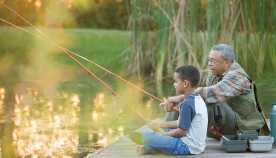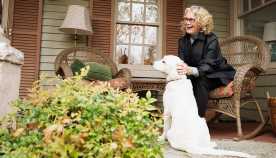AARP Eye Center
- right_container
- Health
- Money
- Work & Jobs
- Social Security
- Medicare
- Caregiving
- Games
- Travel
- More...
- Entertainment & Style
- Family & Relationships
- Personal Tech
- Home & Living
- Auto
- Staying Sharp
- Podcasts
- Videos
Feather River Nature Center and Native Plant Park
History:
The bank of the Feather River below the Bath House was once the site of a Maidu fishing village. The river provided a bountiful supply of giant Chinook salmon and acorns were harvested from the groves of Blue Oaks. Gold was discovered in the Feather River in 1849 bringing a tent city of fortune hunters virtually overnight. The gold soon ran out and the miners left as quickly as they had appeared.
As the need for recreation increased, the Feather River became the ideal place for fishing, swimming and picnicking. This area was established as a City Park in 1926.
The Bath House was built in the mid 1930’s and provided showers and restroom facilities for the swimmers and sunbathers. In December of 1937, a major flood took out the beach area, large trees and altered the river creating a dangerous undertow, making it no longer suitable for recreation. The Bath House was soon then abandoned.
In the fall of 1996, a group of community members gathered to clear the old bath house and in the process, decided to reclaim “Oroville’s first city park” and make it into a Nature Center.
Today the Bath House Museum provides nature education programming, exhibits portraying local wildlife, basaltic boulders as well as paintings. The Nature Center grounds are home to various native plants, trees and animals. The Center also features benches, trails and lies above the breathtaking backdrop of the Feather River.
The Feather River Nature Center and Bath House is operated by the City of Oroville's Parks and Trees Department. The facility is staffed by the Oroville City Docents Association and the grounds are cared for by parks staff and volunteers from the Friends of the Feather River Nature Center, a nonprofit support organization.
AARP Events for Franklintown
-
Featured Event
Barry Wiesenfeld on Jazz, An American Art
Wednesday, Feb 19, 2025 at 7:00 p.m. ET
Zoom
Online Event
-
Featured Event
Yoga & Mindfulness Series: Gentle Movement
Thursday, Feb 20, 2025 at 1:00 p.m. ET
Online Event
-
Featured Event
Moving With Milly for Improved Mobility
Monday, Feb 24, 2025 at 11:00 a.m. ET
Zoom
Online Event

with Automatic Renewal
- Immediate access to your member benefits
- Discounts on travel and everyday savings
- Subscription to AARP The Magazine
- FREE second membership
























































